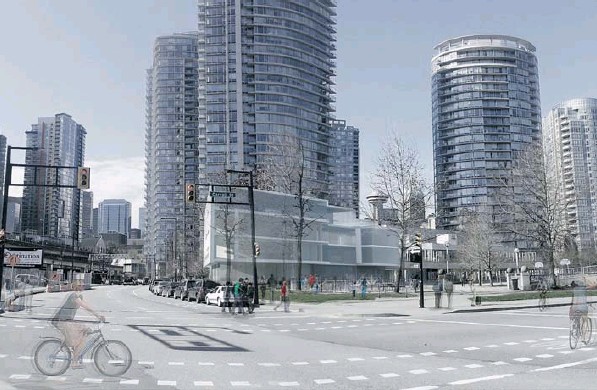Other
Archive for August, 2013
Fintrac Article – Verifying Identities
Sunday, August 18th, 2013VERIFYING THE IDENTITY OF UNREPRESENTED PARTIES, VERIFYING IDENTITIES OF THIRD PARTIES
Other
VERIFYING THE IDENTITY OF UNREPRESENTED PARTIES
Q: What are REALTORS® record keeping obligations with respect to unrepresented parties?
A: Real estate brokers and salespeople are required to verify the identity of any person or entity when “they act as an agent in respect of the purchase or sale of real estate”. Therefore, REALTORS® must complete an Identification Information
Record for their own clients.
The recent amendments to the Proceeds of Crime (Money Laundering) and Terrorist Financing Regulations clarified that REALTORS® must also make reasonable efforts to ascertain the identity of unrepresented parties, but if unable to do so, REALTORS® must record what measures were taken in attempt to obtain the information. Therefore, REALTORS® must also complete an Identification Information Record for every unrepresented party to transactions they deal with, whether or not the identity of that person is actually verified.
The difference between verifying the identity of clients and verifying the identity of unrepresented parties is that REALTORS® MUST verify the identity of their own client. Simply stating that efforts were made to obtain the information is unacceptable.
Q: What should a brokerage do if an unrepresented party absolutely refuses to provide the information required to complete either the Identification Information Record or the Receipt of Funds form?
A: A brokerage is required to take all reasonable measures to acquire required information for an unrepresented buyer or seller. However, if the unrepresented individual refuses to provide this information, this must be noted on the relevant Record and the agent must also decide whether to send a suspicious transaction report to FINTRAC.
VERIFYING IDENTITIES OF THIRD PARTIES
Q: We have a law firm who is representing a client who wants to remain unknown to the buyer. What are the FINTRAC requirements and what is our course of procedure in this situation?
A: REALTORS® are obligated to take reasonable measures determine if their client is acting on behalf of another person and, if so, to fill out the Verification of Third Parties portion of the Individual Identification Information Record. FINTRAC has defined a third party as an individual or entity other than the individual who conducts the transaction. As the law firm is conducting the transaction, they would be considered your client and you would have to verify their identity as such. You would then identify the actual property owner as the third party on the Identification Information Record, as they are the one giving instructions to the law firm.
FINTRAC has informed us that taking reasonable measures to determine the identity of the third party includes asking the question to the client and/or retrieving the information already contained in the REALTOR®’s files. If you are unable to determine the identity of the third party, you should as a precautionary measure describe the efforts taken in an attempt to ascertain the information.
Q: If my clients are getting their financing from their parents (the bank of ma and pa), do I have to identify the parents?
A: Real estate brokers and agents are required, in all transactions, to verify the identity of their respective clients (buyer or seller). In addition, the brokers and agents must verify the identity of (1) persons or entities who provide cash, money orders, bank drafts etcetera to them for a transaction or (2) persons or entities from whose bank account funds are drawn to complete a transaction. Agents and brokers must do this by obtaining a government issued identification document.
For example:
• If the parent of a prospective buyer provides a real estate agent with funds for a property purchased by their child, the agent will have to verify the identity of the parent and the child.
• If, however, the agent receives funds only from the child, the agent will have to verify the identity of the child only. This is true even if the parent has provided funds directly to the child (for use in the transaction) and the child has deposited it into their account and provides the realtor with a cheque drawn on their (the child’s) account.
The agent is never required to verify where the funds came from.
Q: A single family residential property was listed in April 2008. The Vendor passed away recently. There is now an accepted offer on the property, which has been signed by the executors of the estate. Whose information is to be used when filling out the “Individual Identification Information Record “ for the seller — the vendor (deceased), the executors of the estate, or the “estate”?
A: When dealing with an executor of an estate, they are the party who the REALTOR® is required to verify the identity of when completing a Client Identification Information Record. FINTRAC has informed us that this is the case when the executor is named in the will or has some legal document to that effect authorizing him/her to liquidate the estate.
Q: When dealing with Power of Attorney, do we need to ID the Power of Attorney?
A: REALTORS® are obligated to determine if their client is acting on behalf of another person and, if so, to fill out the Verification of Third Parties portion of the Individual Identification Information Record. FINTRAC has defined a third party as an individual or entity other than the individual who conducts the transaction. As the person acting under a Power of Attorney is the person conducting the transaction, they would be considered your client and you would verify that person’s identity as such. You would then identify the actual property owner as the third party on the Identification Information Record, as they are the one giving instructions to the person acting under the Power of Attorney.







